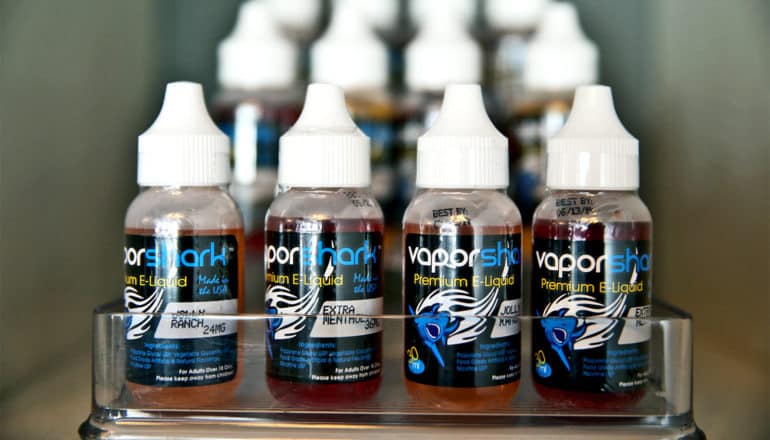
Pulegone, a potential carcinogen banned as a food additive, is present in high levels in some e-cigarette liquids and smokeless tobacco products, according to a new study.
Pulegone (pronounced pju-leh-goan) is in menthol and mint flavored e-cigarettes and smokeless tobacco products. Because of its carcinogenic properties, the US Food and Drug Administration banned pulegone as a food additive last year in response to petitions from consumer groups.
Yet the agency does not regulate the chemical’s presence in e-cigarettes and smokeless tobacco, which companies promote as safer alternatives to regular cigarettes.
“Our findings suggest that the FDA should implement measures to mitigate pulegone-related health risks before suggesting mint- and menthol-flavored e-cigarettes and smokeless tobacco products as alternatives for people who use combustible tobacco products,” says lead author Sven-Eric Jordt, a professor of the anesthesiology department at Duke University.
Jordt and research partner Sairam V. Jabba became interested in the topic because the US Centers for Disease Control and Prevention published studies showing that mint- and menthol-flavored e-cigarette liquids and smokeless tobacco products marketed in the US contain substantial amounts of pulegone.
The two researchers analyzed whether several top brands of regular menthol cigarettes, three e-cigarette brands, and one smokeless tobacco brand contain enough pulegone to be a cause for concern. They compared the CDC-reported amounts of pulegone with the FDA’s exposure risk data—the levels at which exposure-related tumors were reported in animal studies.
Their analysis found that the levels in the e-cigarettes and smokeless tobacco exceeded the thresholds of concern. Regular menthol cigarettes contained levels below the thresholds.
“Our analysis suggests that users of mint- and menthol-flavored e-cigarettes and smokeless tobacco are exposed to pulegone levels higher than the FDA considers acceptable for intake in food, and higher than in smokers of combustible menthol cigarettes,” Jordt says.
“The tobacco industry has long known about the dangers of pulegone and has continuously tried to minimize its levels in menthol cigarette flavorings, so the levels are much lower in menthol cigarettes than in electronic cigarettes,” Jordt says. E-cigarette manufacturers may be less familiar with the dangers and use cheaper ingredients to lower costs.
One limitation of the study is that the FDA’s exposure risk calculations are based on oral exposure in animal studies. These risks may apply to the oral exposure through smokeless tobacco but may differ from inhalation exposure through e-cigarette vapor. There is no toxicity data available on exposure via inhalation. This is concerning because toxicologists consider the lung to be more sensitive to toxic chemicals than the digestive tract.
The study appears in JAMA Internal Medicine.
The National Institute of Environmental Health Sciences of the National Institutes of Health supported the research. The findings are the responsibility of the authors and do not necessarily represent the official views of the National Institutes of Health.
Source: Duke University
The post Minty vape flavors have high levels of banned carcinogen appeared first on Futurity.
from Futurity https://ift.tt/31th5ae
No comments:
Post a Comment